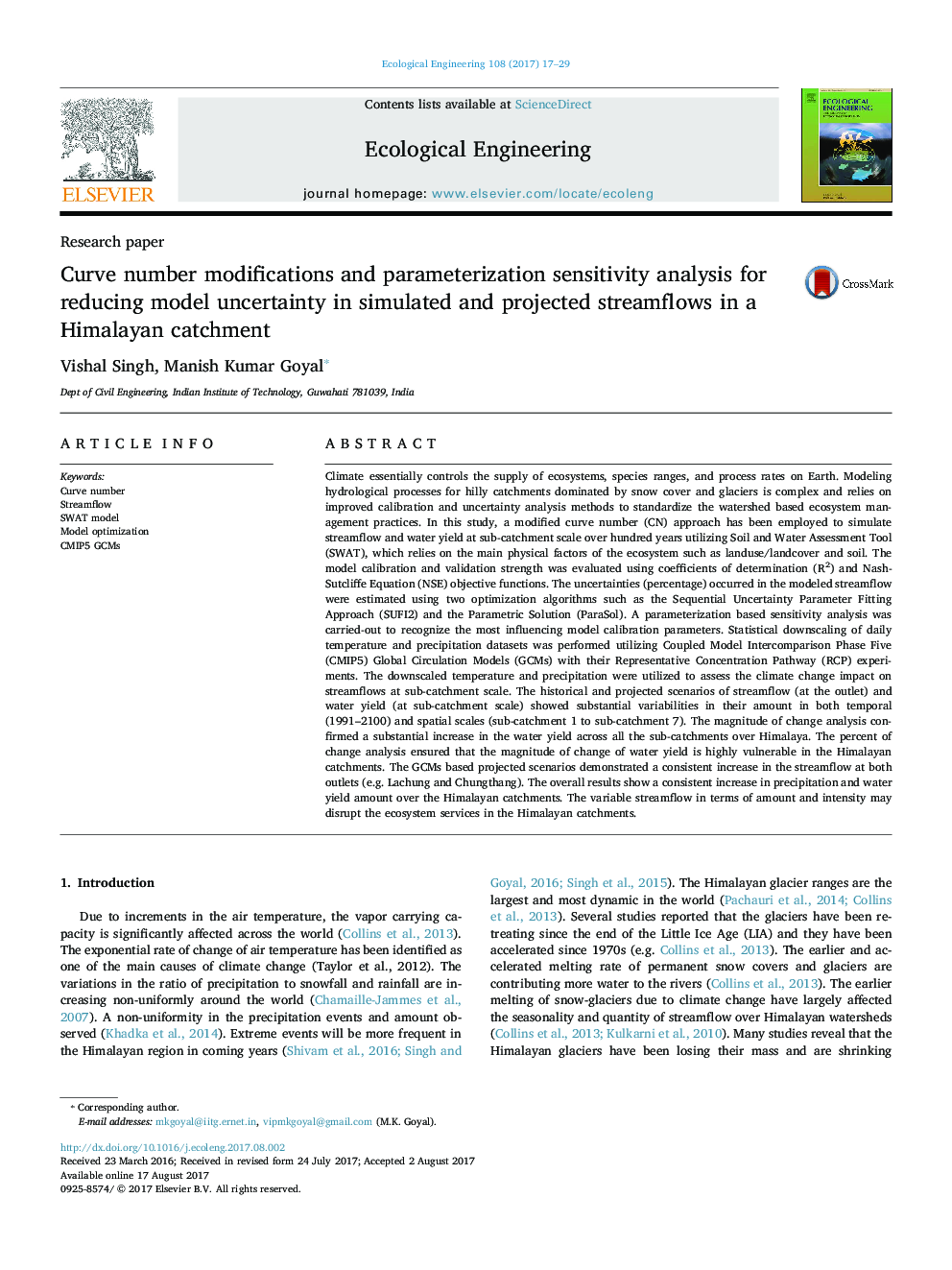| Article ID | Journal | Published Year | Pages | File Type |
|---|---|---|---|---|
| 5743514 | Ecological Engineering | 2017 | 13 Pages |
Climate essentially controls the supply of ecosystems, species ranges, and process rates on Earth. Modeling hydrological processes for hilly catchments dominated by snow cover and glaciers is complex and relies on improved calibration and uncertainty analysis methods to standardize the watershed based ecosystem management practices. In this study, a modified curve number (CN) approach has been employed to simulate streamflow and water yield at sub-catchment scale over hundred years utilizing Soil and Water Assessment Tool (SWAT), which relies on the main physical factors of the ecosystem such as landuse/landcover and soil. The model calibration and validation strength was evaluated using coefficients of determination (R2) and Nash-Sutcliffe Equation (NSE) objective functions. The uncertainties (percentage) occurred in the modeled streamflow were estimated using two optimization algorithms such as the Sequential Uncertainty Parameter Fitting Approach (SUFI2) and the Parametric Solution (ParaSol). A parameterization based sensitivity analysis was carried-out to recognize the most influencing model calibration parameters. Statistical downscaling of daily temperature and precipitation datasets was performed utilizing Coupled Model Intercomparison Phase Five (CMIP5) Global Circulation Models (GCMs) with their Representative Concentration Pathway (RCP) experiments. The downscaled temperature and precipitation were utilized to assess the climate change impact on streamflows at sub-catchment scale. The historical and projected scenarios of streamflow (at the outlet) and water yield (at sub-catchment scale) showed substantial variabilities in their amount in both temporal (1991-2100) and spatial scales (sub-catchment 1 to sub-catchment 7). The magnitude of change analysis confirmed a substantial increase in the water yield across all the sub-catchments over Himalaya. The percent of change analysis ensured that the magnitude of change of water yield is highly vulnerable in the Himalayan catchments. The GCMs based projected scenarios demonstrated a consistent increase in the streamflow at both outlets (e.g. Lachung and Chungthang). The overall results show a consistent increase in precipitation and water yield amount over the Himalayan catchments. The variable streamflow in terms of amount and intensity may disrupt the ecosystem services in the Himalayan catchments.
